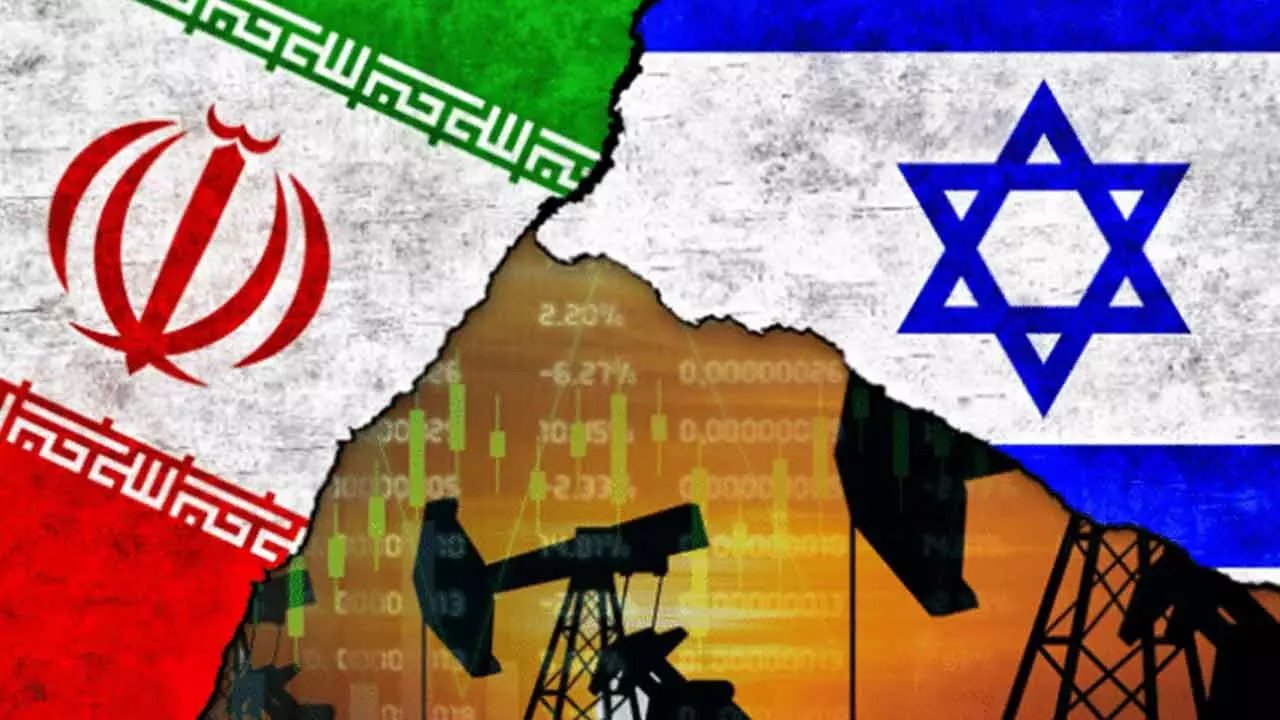Oil Markets Breathe a Tentative Sigh of Relief as Iran-Israel Ceasefire Holds (For Now)
After a volatile few days, oil prices saw a modest rebound on Wednesday as the fragile ceasefire between Iran and Israel appeared to hold. Explore the market's cautious optimism, the lingering concerns about the Strait of Hormuz, and what upcoming US inventory data could mean for crude prices.
Oil Markets Breathe a Tentative Sigh of Relief as Iran-Israel Ceasefire Holds (For Now)

Following a dramatic tumble in the preceding two sessions, oil prices found a glimmer of stability on Wednesday, nudging slightly higher as investors cautiously assessed the precarious ceasefire between Iran and Israel. The market, still reeling from recent escalations, is keenly watching for signs of sustained peace in the volatile Middle East.
Brent crude futures climbed by 75 cents, or 1.1%, to reach $67.89 a barrel, while its American counterpart, U.S. West Texas Intermediate (WTI) crude, also gained 71 cents, or 1.1%, settling at $65.08. This modest rebound comes after both benchmarks hit their lowest levels in weeks on Tuesday – Brent since June 10th and WTI since June 5th – before Israel's surprise strike on Iranian military and nuclear facilities on June 13th.
The past few days have been a rollercoaster for crude. Prices had surged to five-month highs immediately after the U.S. launched airstrikes on Iranian nuclear facilities over the weekend. However, a preliminary U.S. intelligence assessment suggests these strikes, while causing significant damage, only set back Iran's nuclear capabilities by a few months, rather than destroying them entirely. This news, coupled with the shaky ceasefire brokered by U.S. President Donald Trump, has contributed to the recent market movements.
On Tuesday, both Tehran and Tel Aviv signaled a halt to their aerial conflict, at least for the time being, after President Trump publicly expressed his frustration with both sides for violating an earlier ceasefire agreement. As civilian restrictions were eased after 12 days of intense exchanges – which saw direct U.S. involvement in attacking Iran's uranium-enrichment facilities – both nations were quick to claim victory.
The direct U.S. intervention in the conflict had ignited significant fears among investors regarding the Strait of Hormuz. This vital, narrow waterway, nestled between Iran and Oman, is a critical chokepoint through which approximately 18 million to 19 million barrels of crude oil and fuel traverse daily. That's nearly a fifth of the world's total consumption, making any disruption a major global concern. The calming of tensions, however fragile, has momentarily alleviated some of these supply disruption worries.
Looking ahead, traders are now keenly awaiting the release of U.S. government data on domestic crude and fuel stockpiles, expected later on Wednesday. Market sources, citing figures from the American Petroleum Institute (API) on Tuesday, indicated that U.S. crude inventories saw a notable draw of 4.23 million barrels in the week ending June 20th. This data could offer further insights into demand and supply dynamics in the world's largest oil consumer.
While the current ceasefire provides a much-needed pause, the underlying geopolitical tensions remain a potent factor for the oil market. Investors will continue to monitor developments closely, understanding that the stability of the region is intricately tied to the stability of global energy prices.

